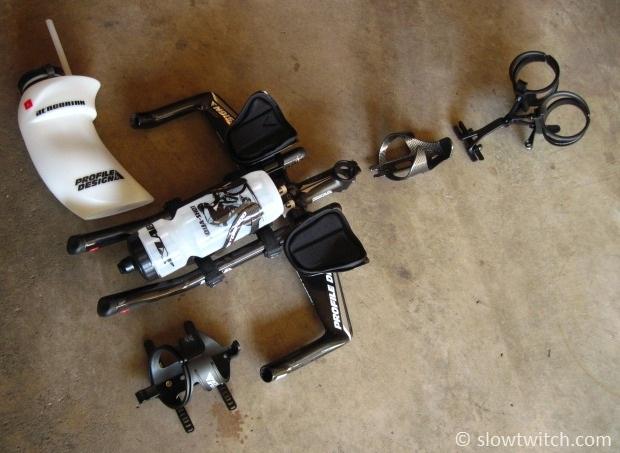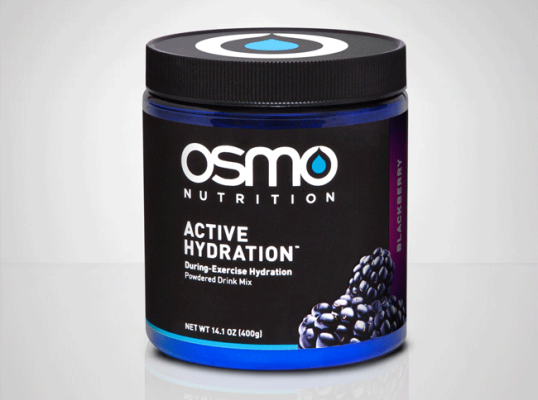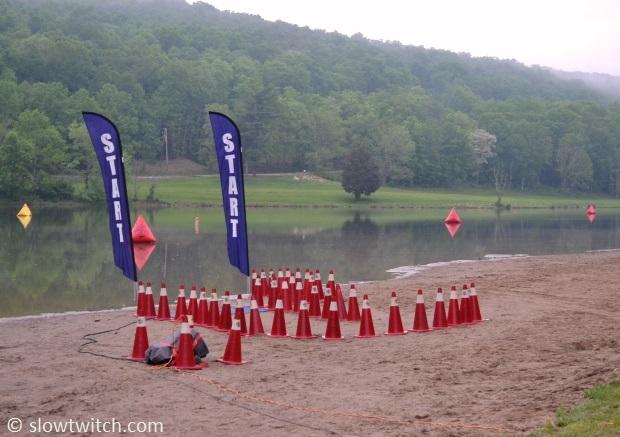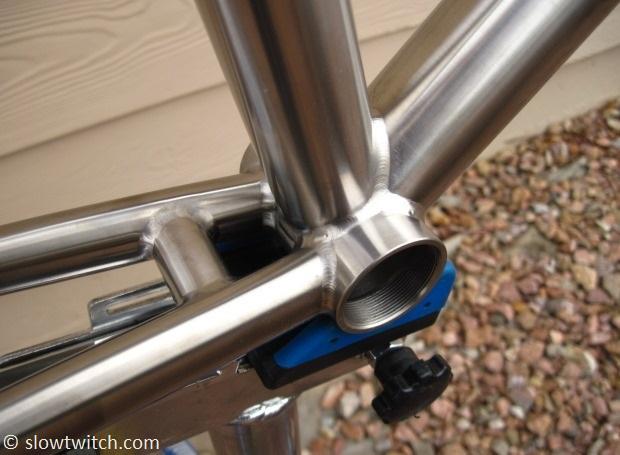Slowtwitch Mailbag – 8
This is the Slowtwitch Mailbag, where we answer readers’ triathlon-related questions. To submit your own question, send an email to us at: mailbag@slowtwitch.com
In our last edition of the Mailbag, we covered a question about race distance accuracy. Part of this included discussion of GPS devices, and we turned to Morgan Christian of Realtimeathlete.com for help. We have one more GPS question this week, and will let Morgan weigh in once again. You can find him on Twitter via @mchristian or his personal website http://morganchristian.com and http://realtimeathlete.com.
Brandon writes:
“How does GPS watch technology work? Is it fairly accurate across the board, or are there advantages/disadvantages for running versus cycling or swimming (like in a watch Garmin 910XT)?
Morgan responds:
“The Global Positioning System, or more commonly ‘GPS’, is a space-based satellite system that was brought into existence by the U.S. Department of Defense back in the early 70s. In the 80s, the government realized the benefits of the technology and made it available for civilian use. Currently there are around 24 satellites orbiting the earth providing GPS service.

At any given point there should be at least 4 GPS satellites 'visible' in the sky. The satellites are regularly broadcasting messages about their position and the current time. Your device (watch or otherwise) is listening for these messages and once it has information from at least 3 satellites it will determine your location by figuring out where you are in relation to the 3 satellites. Once you've got a good 'fix' your device can start calculating various things such as speed and distance.
Probably the most common GPS processors around are the SiRF series that SiRF Technology, Inc, brought into the consumer GPS technology space. The company has changed hands a couple of times and is now owned by The Blackstone Group. Over the years, the basic processors have grown into handling multiple types of communication protocols including communication with other space agency satellites (outside of the US), along with the ability to consume other types of data from various sensors.
Accuracy
Most manufacturers state position accuracy to around 15 meters. Your results may vary from device to device and are dependent on several external factors. Most inaccuracies are typically environmental. Anything that inhibits a good view of the sky (for satellite communication) will cause problems. Trees, tall buildings, or hiding your device under layers of clothing or in a backpack can prevent it from getting and maintaining an accurate position. In general, GPS devices tend to be reasonably accurate for the purposes of multi-sport training and racing.

Above image © Garmin
Running
Your closest alternative to a GPS device for measuring running distance is a footpod. Several manufactures make footpods and they all generally work in the same way. You configure the device for your stride length and it uses that stride length combined with a count of foot strikes to determine the distance travelled. I've found that for road running, footpods can be pretty accurate especially if the route is relatively constant and your footpod is calibrated properly. They can also deliver decent results for trail running as well, but depending on the terrain your strides may be inconsistent which will lead to a poor calculation of distance travelled.
Cycling
There are pluses and minuses to both fixed bike computers and GPS training devices. Fixed computers are typically driven by a fixed sensor (usually a magnet) that rotates with one of the wheels that passes near another sensor that responds to the event. Each computer manufacturer will have guidelines for setting these devices up to get the greatest accuracy. By and large they all tend use the rotation of the wheel with the predefined size of the wheel to figure out what the distance travelled is. In my experience, these are reasonably accurate if installed by the manufacturers’ guidelines.

Swimming
Most of the newer GPS multi-sport watches on the market fare pretty well for gathering GPS data for open-water swims. The typical limiting factor in accuracy is how often and how long the device will have a good look at the sky to determine a good location. For pool swimming your results may vary, especially if your pool is indoors. However, some newer watches from Garmin and Suunto include a swimming mode specifically to address this type of event. These modes rely on the accelerometer in the watch to detect strokes and changes in direction such as flip-turns. They use this information along with some predefined information such as lane length to calculate distance.
Summary
The flexibility of GPS training devices for most outweighs any small deviations in accuracy for most people. With every device iteration, consumers get better and more accurate equipment. Your [accuracy] with the latest device offerings will likely be pretty much the same across the board.”
Reference:
http://en.wikipedia.org/wiki/SiRF
http://www8.garmin.com/aboutGPS/
—
Up next, let’s talk nutrition.
Simon writes,
“I have a question about nutrition for Ironman and 70.3.
I remember reading Chrissie Wellington say you should consume 1 gram of carbohydrate per kilogram [of body weight] per hour. I am 85kg, and as a result I need to be having a gel roughly every 25 minutes (depending on the gel size). As a result, heading into a 70.3 I have 9 gels taped to [my bike’s top tube] based on my expected bike time and a few spare (just in case!).
I notice that my fellow competitors are not consuming anywhere near the same amount of gels as myself. It appears that some people have 2-3 taped to the bike. Even if they are much lighter than me and are faster than me (everyone is)… it seems like I could be overdoing it? I haven't bonked in two 70.3's so I know that I am not eating too little but maybe too much?
What is the rule of thumb for carbohydrates for 70.3 and Ironman? If I need to store 9 gels on the bike, where should I put them? Those little aero bento boxes in the Cervelo P5 and the new Felt IA look like they would store about 3 gels.”

That’s a lot of questions packed together! Nutrition is a very big topic with a lot of conflicting studies and opinions. My response will attempt to cover what I’ve found to be the most common recommendations from a wide variety of sources.
To begin, it sounds like you’ve chosen to base your intake on grams of carbohydrate, not calories. In my opinion, this is fine to do – as long as you know what you’re getting in to. If the foods/gels you take in also have calories from protein and fat, you could end up eating more than you bargained for. We know that carbohydrates and protein have 4 calories per gram, while fat has 9 calories per gram. Personally, I prefer to use total calories rather than only carbohydrates, as it helps to ensure that I’m keeping my math clean.
The next thing to think about is whether or not you’re getting any calories/carbs from a sports drink. Are you drinking ONLY plain water, and no sports drink? Do you know what your competitors are using? They may only have a few gels on their bike, but could also be getting a significant amount of carbohydrates from sports drink in their bottles or solid food in their jersey pockets. They could actually be taking in more carbs than you – you just can’t see them.

In terms of specific recommendations, the 1g/kg number is, in my experience, a good ballpark to get you started. Here are some things to think about that affect how much a person needs to deviate from that baseline:
-Body weight
-Race distance/intensity
-Discipline (e.g. cycling vs. running)
-Ambient temperature
-Food source – is it something that you digest easily?
-Speed of food intake (e.g. are you staying on schedule and fueling consistently – or getting behind and then trying to ‘catch up’ by eating a lot in a short period of time)
Taking all of these things into account, I’ve heard recommendations between 30 and 90g carbohydrate per hour from various nutritionists and sports nutrition companies. I have personally never heard of anyone recommending more than 90g, but perhaps someone has. The best piece of advice I can give you – that I hear time and time again – is that you should eat as much as possible without getting Gastrointestinal (GI) distress. If you can tolerate it, go for it. Generally speaking, you’re going to go faster (especially for long-course racing) if you eat more. If you’re 85kg and taking in 85g of carbohydrate, I’m guessing you’re using a gel like Honey Stinger, which has 29g carbs per packet (total of 87 for three packets), plus plain water. For half Ironman races, you may need to dial your intake down.
Just as an example, I’ll lay out a sample nutrition plan for myself. To begin, I set a target for calories, fluid volume, and electrolytes per hour for both cycling and running. Once I know those three constraints, I work backwards and fill in with my food/drink choices.

I am 77kg, or 170lbs. When I participated in a press event for Osmo Nutrition early this year, these are the numbers that Dr. Sims established for me for long-course racing:
FLUID (BIKE AND RUN): 10ml/kg – 15ml/kg per hour
For me: 770 – 1155ml per hour (26 – 39 oz) Osmo
FOOD CALORIES (BIKE): 3.5 – 4 calories (kcal) per kg per hour
For me: 270 – 308 kcal per hour
FOOD CALORIES (RUN): 3 – 3.5 kcal per kg per hour
For me: 231 – 270 kcal per hour
TOTAL BIKE KCAL: 270 – 308 from food + 114 – 175 from fluid = 384 to 483kcal
TOTAL RUN KCAL: 231 – 270 from food + 114 – 175 from fluid = 345 to 445kcal
As you can see, Dr. Sims uses calories, not carbs. Her recommended range is 3 – 4.5 kcal/kg, and she suggests that you work within that range based on some of the things I mentioned above (that is also assuming that you’re using a low concentrate drink that provides some calories). I can hit 4.5 calores/kg during the first few hours on the bike of an Ironman, but I taper it off for the final hour. For the run, the 3-3.5 range is what I can handle. When I follow these guidelines, I end up using a plan that is similar to what most professionals tell me – you don’t go long periods during the race where you’re not eating or drinking something. I have never hit the exact numbers, but rather use them as a target and guideline.
One final recommendation I’ve heard is very general, but seems to work for a lot of folks. For an average size male, shoot for 400 calories per hour for a full Ironman, 300 calories per hour for a Half, and 200 calories per hour for an Olympic distance race. If you find that is too much or too little for you, adjust accordingly. Don’t forget to include calories from both food and fluid.
Storage is another animal in itself. There are a LOT of options. For the full version of this, check out the article Carrying All of that Stuff linked at the bottom of this page.

In that article, we detailed some of the key food-carrying options in the triathlon world today, along with the pros and cons of each. If you really like gel products, one easy option is to use EFS Liquid Shot, as it is available in pre-packaged flasks and large bottles. You could conceivably pour all nine (or more) of your gels into a single bike bottle that sits in a standard bottle cage – with zero gels taped to your top tube. If you like a certain brand of gel that is only available in small packets, you can look in to the various food carriers from brands like Dark Speed Works, Profile-Design, TNI, Xlab, and others. This may also influence your decision the next time you go shopping for a triathlon bike. Some have the ability to hold two bottles on the frame, while others only have one (or even zero in the case of some Giant frames). The Specialized Shiv Tri is unique in that it has one bottle cage on the frame, along with a unique internal bladder system. There are a lot of different options out there, so be sure to consider hydration/food options in addition to the frame geometry and other technical features of the bike.








